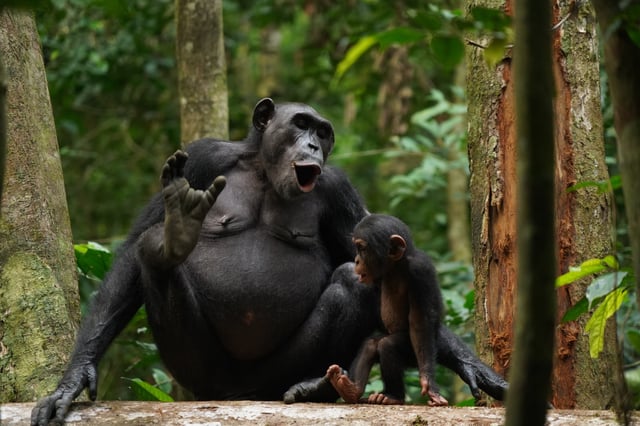Overview
- A study published in *Science Advances* analyzed over 4,300 vocalizations from 53 wild chimpanzees in Côte d’Ivoire's Taï National Park.
- Researchers identified 16 distinct two-sound combinations, or bigrams, linked to specific behaviors, such as feeding, resting, or tree-nest building.
- Chimpanzees employ at least four methods to combine calls, including modifying meaning through order, addition, and idiomatic pairings.
- The order of calls matters: for example, 'hoo + grunt' signals feeding or rest, while 'grunt + hoo' indicates travel or group merging.
- These findings suggest the evolutionary roots of human language may trace back to a shared ancestor with foundational combinatorial vocal abilities.

